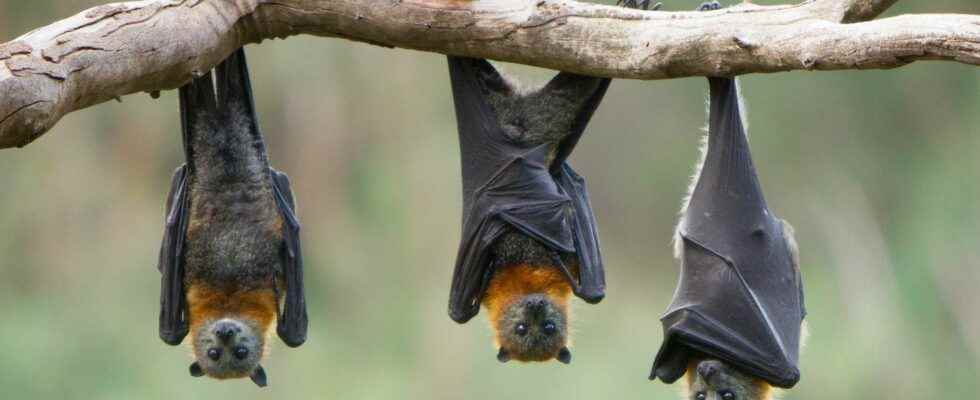As far back as humans have been at war with each other, they have enlisted animals to support them. Horses, of course. But also all sorts of other innocent creatures. From the dog to the elephant via the mosquito, the bear and the dolphin.
You will also be interested
[EN VIDÉO] These cute animals are surprisingly dangerous Loris, platypus, raccoon, panda, porcupine fish, wolverine, these animals may seem very cute to us in appearance, but they all hide their true identity as killers. Poison, claws, disease, or simply phenomenal strength, these creatures have claimed more than one human life in the past. Who would have thought that under these hairs and these scales could hide real killing machines?
When we talk about war and animals, we naturally immediately think of the horse. For no other animal has played such a central role in the history of warfare as the horse. He was already at the side of men for this purpose 5,000 years ago. But other animals have been recruited over the centuries. By fair means or foul. And with more or less success.
The dog, faithful in all circumstances
the dogis man’s best friend. It is also, with the horse, probably one of the first animals to have accompanied soldiers on the battlefield. A story tells how, around 600 BC, a pack of dogs routed an army that intended to invade Lydia, an ancient country in Asia Minor, near the Aegean Sea. The Romans had even equipped their dogs of war of spiked collars and armour.
Today, military dogs are more readily reserved for the roles of messengers, trackers, scouts, sentries or sniffers. This is the example of the dogs trained to find bombs by the American army in Afghanistan and Iraq.
The pigeon, always traveling
The pigeon — like other birds — is a master of orientation. And when he is trained in this, he can even find his way back for almost 3,000 kilometres. We understand why the pigeon has long been used by the military to transmit messages.
During the siege of Paris for the Prussian forces (1870-1871), carrier pigeons were used to carry messages on microfilm. To intercept them, the Germans relied on falcons.
During the Second World War still, thousands of pigeons have been trained for military operations “classified”. Among them, Gustav. It took him more than five hours to cover 240 kilometers and bring the news of the imminent landing in Normandy to the British forces.
The elephant, the quiet strength
On the battlefield, theelephant can become a valuable ally. By its size, already. Because he is the greatest mammal living on Earth. And because, trained and equipped with armor and spikes iron at the end of its defenses, it becomes quite simply formidable. Able to literally crush enemy troops.
Thus, when Alexander the Great appeared on the battlefield of Gaugamela, around 331 BC, he found himself facing the war elephants of the Persian Empire. Once the battle was won, he integrated these elephants into his troops.
The camel in a hostile environment
The camel is hardly able to charge as the horse can. Its advantage is that it supports long walks in difficult conditions and with heavy loads. For example, it was used to transport the wounded in India during the First World War. It is still used for patrols in deserts or mountains.
The mosquito, lethal weapon?
Among the slightly wacky attempts to obtain the support of an animal, let us quote that of the German army, during the Second World War. She decided to flood swampy areas south of Rome, Italy, to provide the mosquito carrying malaria an environment conducive to its proliferation. And the mosquito settled there. But when the fighting started in the area, theepidemic of malaria hit both Allied soldiers and… German soldiers!
A cattle to charge the opponent
Those who wanted to take advantage of the power of herds of cattle have also experienced some disappointments. If the tactic seemed to work rather well before the advent of firearms fireit turned out to be more random afterwards.
In West Africa, for example, on the occasion of the battle of Tondibi (1591), the army of the Songhai Empire expected to charge the Moroccan lines with 1,000 fleeing cattle. But the rifle fire scared the cattle. And the herd turned against the army that started it.
The bee to pierce enemy lines
The bee has also sometimes been used to attack opposing lines in times of war. From antiquity, Greeks and Romans had the habit of catapulting hives beyond the walls besieged cities. And even during the Vietnam Warin the 1960s and 1970s, guerrillas reportedly placed wild beehives along patrol paths and excited their inhabitants with fireworks as soldiers approached.
The Wojtek bear and its 400 kilos
Although the bear has made several appearances on the battlefields, it is one of them that is particularly remembered. The Wojtek bear. Adopted by Polish troops, he fought in Iraq, Palestine, Egypt, then in Italy where, in 1944, he was in a series of the bloodiest battles of World War II. With his 400 kilos and his meter eighty, he then helped to transport the boxes of ammunition.
The dolphin to win the battle of the waters
The dolphin is perhaps the most amazing animal that actually served military purposes. Its main asset: its echolocation abilities, which make it capable of identifying objects under water. They can thus become good patrollers or good underwater mine detectors. Dolphins took part in mine clearance in the port of Umm Qasr during the war in Iraq.
Dolphins can also be trained to spot enemy divers or come to the aid of friendly swimmers. On the other hand, the rumors that they would be able to put a soldier to death are denied by the armies.
Interested in what you just read?
